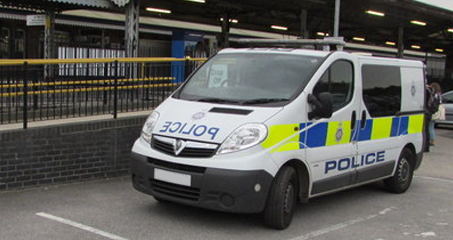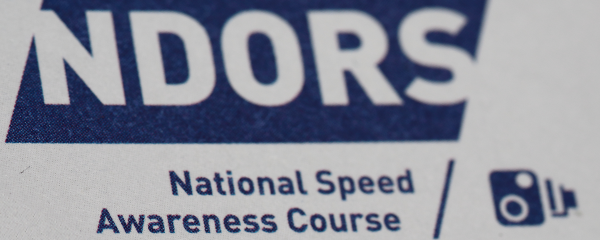Feb 7, 2018
Every week there seems to be a news story about how prices are rising for motorists, whether this is fuel, fees, tax or insurance, and this has now reached the point where many drivers may not be able to afford to drive at all this year.
A survey by comparethemarket.com has found that 1 in 5 drivers have said that they may have to sell their car in 2018 due to not being able to afford the costs associated with running it, which equates to around 7 and a half million drivers in the UK.
The inflated cost of car insurance seems to be one of the most significant issues. The cost of car insurance has hit a record level which is pushing many motorists to the breaking point. It has been rising steadily for a while now, and the average annual premium is £758, which is up £43 year on year, causing 52% of people to say that they may need to give up their car.
55% of drivers are also saying that rising petrol prices and the cost of car repairs are becoming too high for them to afford, with an average of £342 being spent on garage bills in the last 12 months with 1 in 10 paying up to £1000.

Avoid high repair bills
One of the ways that high car repair bills can be avoided is to ensure that you do your research before committing to getting your car fixed somewhere, and get a second opinion before going ahead with any repairs. Recently in the news, there was a story of a girl who was nearly charged over £600 to fix her air conditioning that her car did not even have. When she got a second opinion, the garage discovered it was a different fault, but the risk still ran that she could have been charged for something that she did not have. As 38% of drivers said that they have a knowledge gap about their car which is preventing them from being cost-efficient, it seems that this is one area that many people could improve in.
In fact, 43% of drivers are aware that they are not cost efficient when it comes to their cars for some reasons, but there are a few other ways in which people can stay on top of the things which can impact on the cost of running a car.
Compare and Research
For example, always research and compare car insurance quotes when your premium is up for renewal and don’t automatically accept the quote from your current insurance company as this may not necessarily be your cheapest option. Check for no claims discounts and shop around. Don’t be afraid to barter between two companies to lower your price.
You may also benefit from looking into having a black box installed in your car to bring your insurance premium down, especially if you are a young driver looking to cut costs. Some insurance companies are also offering black boxes for drivers of any age, and it can help to lower your insurance costs and provide money-saving tips.
The main worry that has been stated by Simon McCulloch, Commercial Director at comparethemarket.com is that if the cost of owning a car continues to rise it may put the brakes on car ownership in the UK. In the long run, the rising costs would be bad news for the economy as many people need their car to be able to get around, whether to work or to take the kids out.
How PetrolPrices.com can help
As well as researching garages and insurance quotes when required, you can save money by ensuring that you always fill up your tank with the cheapest fuel available to you, and we can help you with that.
We find and publish the lowest fuel prices in each area of the country with 98% of stations being updated daily, so you know that you are always receiving the most up to date information for your particular location. You can get a price alert for your area via email as well.
In our basic plan, which is free, we have limited searches and limited prices alerts, but for just £2 a month with Plus you can get a route planner to find the cheapest fuel on your route, more searches, better searches and so much more information.
Do you find that the cost of driving has risen up? What’s your biggest concern about the expense of motoring? Let us know.
Feb 7, 2018
As a motorist it is important to be aware of the speed limit at all times to ensure that you are driving safely and that you are not breaking the law, but there have been a couple of speeding-related stories in the news recently which may change how likely it is that you will get caught if you were to drive a bit too fast. Here at PetrolPrices, we want to keep you informed and updated on all the latest speeding-related stories.
Wear your seatbelt
The first update is less to do with speeding itself and more to do with speed cameras, as more than a third of British police forces have admitted to routinely using mobile speed camera vans to catch people breaking other road laws.
This tactic saw 8000 drivers who were not wearing a seatbelt and 1000 drivers who were using their mobile phone while driving getting fined, with 500 more being caught for unnamed offences in 2016.
With 16 out of 54 police forces using these vans to crack down on motorists, they have been able to dish out £100 fines for not wearing a seatbelt and £100 fines plus 3 penalty points for using a mobile phone behind the wheel (although this has doubled to £200 and 6 points since 2017).
Among the forces who say they routinely use mobile speed camera vans to catch unlawful behaviour are Hampshire, Northumbria, Kent and North Wales, and there are also 4 other forces who say that they use this method occasionally.
Could this revelation be enough to encourage people to wear their seatbelts and not use their phones whilst driving due to the fear of being caught? It is thought that this could be the key to changing drivers’ behaviours, but can this really be more effective than campaigns showing the kinds of horrific crashes that can occur when a motorist is distracted by their phone or not wearing their seatbelt?

Tighter regulations
The topic of scaring people into following road laws has been present in another speed-related story this week as Chief Constable Anthony Bangham came under fire from other police leaders for suggesting that officers should be less lenient on those speeding even 1mph over the limit and that the 10% buffer should be scrapped.
In addition to this it was suggested that he was backing the implementation of websites where people can upload dashcam footage of unsafe drivers to alert the police, causing campaigners to argue that the roads are already covered with CCTV, speed cameras and Automatic Number Plate Recognition Systems and motorists really don’t need to be watched any more closely.
It has also been said that this idea would cause mistrust and suspicion amongst drivers, especially as the UK has the most surveillance cameras in Europe and the network responsible for monitoring motorists takes 40 million photos per day, people do not need to feel like they are being spied on by fellow road users too.
In reaction to Bangham’s claims that officers were not doing enough to enforce speed limits, a speed camera was set up outside his office in Hindlip Hall near Worcester by the Sunday Times to see what kinds of speeds were being driven closer to home.
The results showed that 117 motorists were caught speeding in the 30mph zone within an hour, at a rate of 2 per minute, with a quarter driving between 31 and 35mph and the highest recorded speed was 51mph which shows how much more work would need to go into clamping down on minor speeding offences.
Following this, Chief Constable Anthony Bangham has clarified that his aim of penalising even those going 1mph over the speed limit would not be achievable and has said that it would be suitable on occasions where someone was driving over the limit outside a school for example.
Tickets revoked
It was also revealed in the news that almost a quarter of a million speeding tickets issued in the last year were cancelled. Greater Manchester police revoked 28% of their tickets, West Midlands 21% and Bedfordshire 19%. On the other end of the spectrum, both Staffordshire and North Wales police stood by 99% of their tickets. Gloucestershire Police said that 43% of tickets cancelled were because of officers not being able to trace guilty drivers. Previous Home Office showed that 53% of cars broke motorway speed limits, 53% also breached 30mph areas and a huge 81% went over 20 in a 20mph zone.
With these types of stories highlighting speeding issues and other violations too, hopefully, it will put these factors at the forefront of drivers’ minds so they are less likely to commit them themselves.
Do you think speeding regulations need to be stricter? Would you expect a speed camera to check for seatbelts? Let us know
Feb 1, 2018
Over the last two years almost 4000 animals were hit and killed by vehicles on major routes in Britain, and although this may seem like a large number, these are just the reported ones. Te estimated numbers are nearer 165,000 a staggering figure.
In fact, 39% of motorists have acknowledged to hitting an animal at some point throughout their life driving, and only 14% reported it, although there are particular animals which you need to report hitting by law. These are dogs, horses, cattle, pigs, goats, sheep, donkeys and mules, as set out in the Road Traffic Act of 1988. What is interesting is that 59% of those who had hit an animal and not reported it, said this was because they knew that only certain animals need to be reported.

Facts and Figures
The figure of 4000 only includes animals that have been killed on the road in accidents which were reported, which is why there are only four rabbits and four pheasants in the data although these are two types of animal that you would expect to have been hit most often. Interestingly enough the report said that a wallaby had died! The list of killed animals also included a heron, peacock and a goat.
The most commonly hit and reported animal is a deer, with 1117 being killed over the two year period, making up 29% of all reported animal accidents. Badgers were the second most hit at 23%, which equates to 915 reported accidents, and foxes are in third place with 716 being killed and reported.
Avoiding Animals
Despite being warned that they should not change their driving if they spot an animal in the road, 49% of motorists had tried to avoid hitting an animal with 43% of them saying they had tried braking heavily and 40% admitting that they had swerved to avoid one. When learning to drive, learners are told never to swerve or brake suddenly, in avoiding an animal running across the road, to protect the safety of other motorists.
On the other end of this scale, 11% said that the reason they did not try to avoid animals in the road through heavy braking or swerving was to protect other drivers (33%). 22% said to prevent hurting themselves plus any motorist who hit another vehicle due to trying to dodge an animal would be entirely liable for the collision.
However, some drivers would change their driving behaviour for certain animals but not others, with 80% saying that they would swerve to avoid a dog. On the other hand, only 47% said the same about a bird, which could link to the fact that hitting a dog needs to be reported whereas hitting a bird does not.
Most Dangerous Road
A different report released found that the most dangerous road for animals was the A303 from Basingstoke to Devon, via Stonehenge. This road runs through some beautiful countryside, which means more animals are liable to run across. In Canada, they have a system that along bigger roads that have a high proportion of animal deaths, they put large barriers to stop animals from running into the road.
In the same report, 18% of Britons said that they would eat roadkill, and some even said they had eaten roadkill! Looking further at the results at what animals people would eat, 10% would be happy to eat a swan and 14% willing to eat a squirrel!
Staying Safe
It is important to remember that staying safe on the roads and protecting yourself and other motorists may mean that hitting an animal is unavoidable at times. If you, unfortunately, do kill an animal, and you can recognise it as one on the list, then do make a note of the area, road name and time of day and get in touch with your local authority as soon as possible.
For more information on reporting animals, please visit the Government website.
Do you swerve around animals when driving? Would you eat roadkill? Let us know in the comments
Jan 25, 2018
Growing concerns around the safety of smart motorways have led to Highways England agreeing to install extra emergency lay-bys on this new type of road to give drivers more opportunities to stop if they break down or are involved in an accident.
The purpose of smart motorways
At present, the maximum gap there should be between emergency lay-bys is 1.5 miles but this is going to be reduced to 1 mile where possible to provide reassurance to drivers who may be worried about driving on a motorway which has no hard shoulder available.
Smart motorways have been created to help to ease congestion and improve capacity by opening up the hard shoulder to traffic to give motorists an extra lane to use, but AA president Edmund King has stated that this should not be done at the expense of safety.
In fact, an AA survey carried out in 2016 showed that many drivers think that smart motorways are ‘death zones’ and also described emergency lay-bys as ‘desperate unreachable havens’ which suggests that many of the people who use these roads do not feel safe when doing so.
 © Copyright Highways England and licensed for reuse under this Creative Commons Licence.
© Copyright Highways England and licensed for reuse under this Creative Commons Licence.
Smart motorway safety review
Now that Highways England has completed a smart motorway safety review they have seen that more emergency lay-bys should be created, especially in high-risk areas, to help motorists to avoid being hit from behind at speed should they experience an issue and have to stop in a live lane.
Unfortunately, an accident of this nature did occur over the festive period in Cheshire when a broken down family car was hit by a lorry at around 60mph while they were using a section of road which was being prepared to be a smart motorway so had no hard shoulder. Luckily they escaped with minor injuries but this may not always be the case, and steps should be taken to ensure that this kind of incident does not happen again.
Currently sections of the M25, M1, M4 and M6 have been converted into smart motorways and there are 480 miles of smart motorway lanes planned for the future, so it is vital that safety is looked at seriously to ensure that those sections yet to be built give drivers plenty of opportunities to leave the road should they break down or have an accident.
Knowing the laws
Those using smart motorways also seem to be confused about what it means when a red X is being displayed over a lane, as more than 25,000 motorists have been sent warning letters for driving in these lanes when they shouldn’t be. Individuals have not been charged for this in the past but it is understood that police will start fining for this violation in the next few months.
This suggests that perhaps people need to be given detailed explanations about what smart motorways are and how they work as this will help them to avoid fines and drive safely while they are using them.
It is also important for those driving on smart motorways to keep their cars well maintained which will mean that they are less likely to break down and cause an issue. For example, checking oil and water levels, filling up with petrol and windscreen washer fluid, and topping up tyre pressures, are all ways in which cars can be prepared for the roads, especially when a long journey is planned.
Offering reassurance to drivers
Hopefully, this new move by Highways England will help motorists to use smart motorways with confidence and without the fear that they will be stuck in a dangerous position should they break down during their journey.
With more emergency lay-bys, with shorter distances between them, to take advantage of should the worst happen, drivers should no longer see them as being ‘unreachable havens’ and should see them as being an option that will be available to them when they need one.
Have you ever had to use an emergency lay-by? Do you find expanded motorways increasingly daunting? Let us know your thoughts down below.
Jan 25, 2018
In the year up to November 2017 nearly 1 million vehicles were bought on finance, totalling a debt of more than £18 billion, but millions are struggling to afford to make their payments, which has sparked financial crisis fears.
Deals offered to anyone
Data from the RAC has shown that around 10% of motorists are finding it difficult to pay their car finance bills, and almost half are having to cut back on spending in other areas so that they don’t miss any payments.
The fear around this is that if a high number of people default on their debts it could be enough to start a financial crisis which would have a devastating impact on the economy, so the way that people are offered car loan deals needs to be looked at to prevent this from happening.
Currently, credit agreements are being sold by car salesmen who are not financial experts, and these deals are even being offered to people with bad credit history and the unemployed who are likely to struggle to make repayments and should be given different options if they would like to purchase a new vehicle.
It is being made too easy to go to a car showroom and drive away in a new car without having to leave a down payment, which is a very attractive option to many people but will only mean that they end up in financial difficulty in the long run.

Reading the small-print
Almost 90% of cars bought in the UK on finance are sold through personal contract purchases. This means that the customer pays off a portion of the cost of the car over three to five years and then decides whether they want to pay a final lump sum to keep it or to give the car back.
One downside to this is they there are penalty charges in place if the car is returned early, which means that those who cannot afford the repayments are being hit with a fee when they try to take the car back. This could partly be down to the fact that many people did not understand the deal that they were being offered.
The RAC’s research also showed that 25% of motorists did not understand the different car loan options that were available to them, and 75% didn’t shop around for better deals, showing that those hoping to purchase a car through finance need to be educated and informed before they are able to make a commitment to reduce the possibility of them defaulting on their loan in the future.
Rules around affordability
Chairman of the Commons business, energy and industrial strategy committee, Rachel Reeves, said that much of the rise in consumer debt is down to car finance and feels that the Financial Conduct Authority should take a look at strengthening the rules around affordability in order to prevent this from causing a financial crisis.
With around 70,000 new cars being bought on finance each month, this is an issue that needs to be taken seriously to prevent people from getting into a loan repayment situation that they simply cannot afford. The financial situation of the person looking to take out the loan should be assessed to see if they will be able to keep up the payments over the agreed time period, and it should be made very clear that they will be penalised should they try to return the car early.
Through providing people with all of the information and options that they need before they commit to taking out a finance deal for a new car, this fear of a financial crisis being sparked can be extinguished and motorists can look forward to enjoying their new car rather than worrying about what financial difficulties could be ahead of them.
Did you purchase your current car on finance? Do you think the laws surrounding car finance should be tightened? Let us know your thoughts down in the comments
Jan 18, 2018
The year 2017 saw a record 1.4 million drivers attending road awareness courses, with 1.2 million of these needing to take part in retraining because they were caught speeding, which has been shown in data from the National Driver Offender Retraining Scheme (NDORS).
The Road Awareness course
NDORS is unique to the UK and is a scheme offered to those who have been caught committing a driving offence, such as speeding, which they can then complete to avoid having points added to their licence and having to pay a fine.
This is down to the discretion of the local Chief Constable and not all motorists will necessarily be offered the chance to complete the course, but those who do will be able to take part and complete a re-education which will remind them of driving laws in order to help achieve greater compliance.
Drivers who complete the course do not ‘pass’ or ‘fail’ and the aim of the courses is to prevent people from reoffending in the future, and to make them safer while they are using the roads. These courses are not suitable for those who have committed high risk offences and nobody has the right to be offered the chance to take part.
Once a road awareness course has been completed the driver’s details are kept on a database for three years, and if the same offence is committed during this time they will not be allowed to take the course again and will have to accept a points penalty and a fine.
 © Copyright Flickr User and licensed for reuse under this Creative Commons Licence.
© Copyright Flickr User and licensed for reuse under this Creative Commons Licence.
Is there any sign of change?
With the number of attendees across all 9 retraining courses increasing by 2% year on year this suggests that people are breaking driving laws more often rather than becoming more aware of how they should be driving.
The director of motoring research charity the RAC Foundation believes that 2018 will see even more drivers having to take road awareness courses due to the introduction of smart motorways across the country. This is because there are plenty of smart motorway rules which motorists have already been breaking, to the point where 80,000 warning letters have been sent out since December 2016 with many targeted at those caught driving in a lane with a red X above it.
The past year has also seen an increase in the amount of money that the police receive for each person who attends one of these courses, which has risen from £35 to £45 per driver. This money is given to reimburse the force for the expense of catching speeding motorists and totals £54 million each year.
‘Greatly different between constabularies’
However, the number of drivers sent on road awareness courses differs greatly between constabularies, so not all police forces are benefitting from these reimbursements. For example, the Avon and Somerset police force sent 80,235 people onto these courses whereas Wiltshire saw absolutely no attendees despite being right nextdoor to Avon and Somerset.
Offenders who have decided to take the course can choose to attend wherever they like and do not have to return to the place where their offence was committed, however the correct amount of money from their attendance will go to the police force from where they were caught.
It is not only the number of road awareness course attendees that differs by area, but the amount that it costs to complete the course too. An individual sent on a speed awareness course in Northamptonshire will pay £75 whereas someone attending the same course in Essex will spend £99, which is 32% more expensive.
These figures may not necessarily be surprising as we are often hearing that more people are being caught for offences such as speeding and using a mobile phone behind the wheel, but these road awareness courses could work to deter people from re-offending, especially when they want to avoid getting points on their licence or paying a fine.
Have you ever been on a road awareness course? Do you think they are a better solution than points and a fine? Let us know your thoughts in the comments below.





